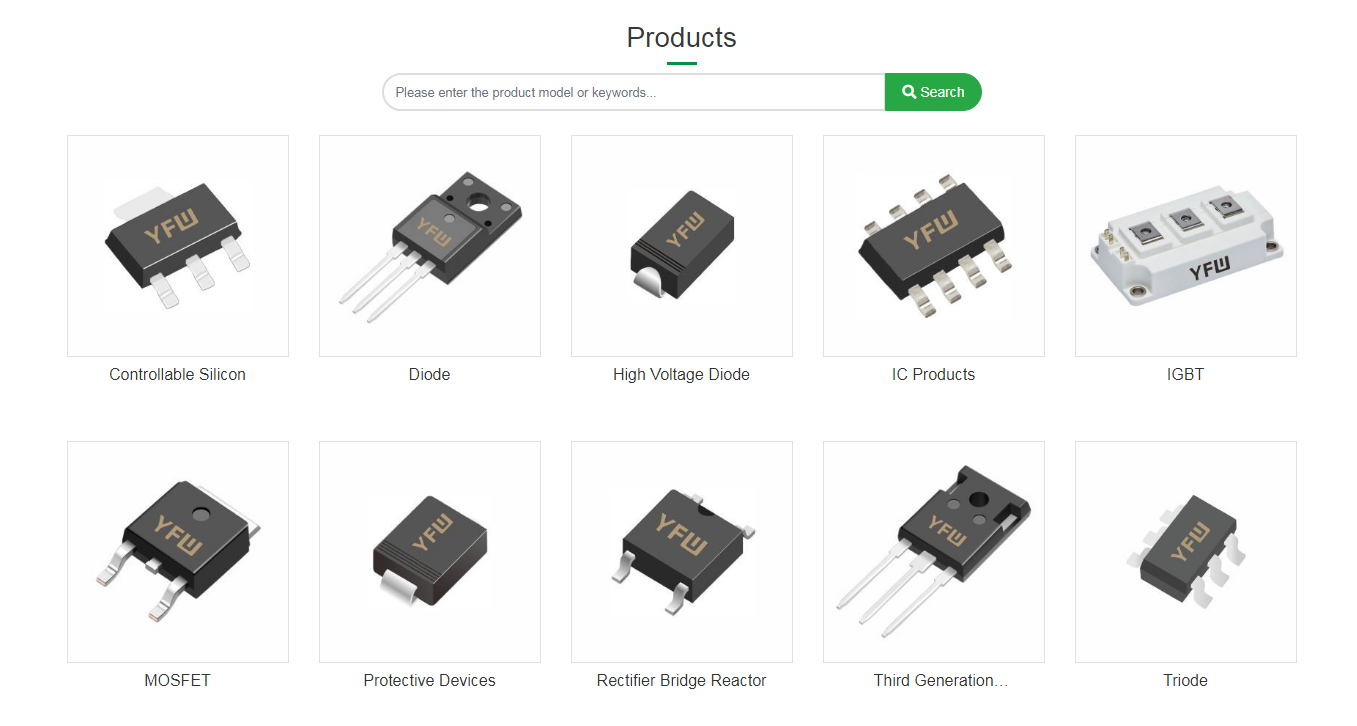Date:2025-03-18 Categories:Industry News Hits:940 From:Guangdong Youfeng Microelectronics Co., Ltd(YFW)
A Schottky diode, also known as a barrier diode, is an important semiconductor device. It is of a Schottky structure formed by a metal and a semiconductor, with many unique properties and applications. I. Basic structure: The basic structure of a Schottkyode is similar to that of an ordinary diode, consisting of P-type and N-type semiconductor materials. It has two leads, namely the anode (A) and cathode (K), which are connected to the P-type and N-type semiconductors, respectively. Its structure is similar to that of an ordinary diode, Schottky diodes usually have higher voltage and current capacity, in order to better protect the circuit. II. Advantages and disadvantages: Compared with ordinary diodes Schottky diodes have the following advantages: 1. They have a lower forward voltage drop, which allows for fast switching; 2. They have a faster recovery time which allows for high-frequency operation; 3. They have higher temperature stability; 4. They have a higher reverse breakdown voltage. However, Schottky diodes have some disadvantages: 1. The reverse breakdown voltage is low, making them susceptible to damage from excessive voltage; 2. They are highly sensitive to temperature, making them susceptible the effects of overheating. III. Working principle: The working principle of a Schottky diode is based on the Schottky structure. When a forward voltage applied to the device, due to the Schottky structure between the metal electrode and the n-type semiconductor, electrons can easily inject from the metal electrode into the semiconductor, forming a conductive channel, which gives the device a low forward voltage drop. When a reverse voltage is applied to the device, due to the characteristics of the Schottky structure, flow of electrons is greatly hindered, resulting in a weak reverse conduction capability. IV. Application: Schottky diodes have a wide range of applications, including but limited to the following aspects: 1. As a switch element, used in high-frequency circuits and fast-switching circuits; 2. As a voltage stabilizer, to stabilize and adjust the power supply voltage; 3. As a detector, used to detect radio signals; 4. As a protective element, used to prevent excessive reverse voltage the circuit. V. Reasons for damage: A Schottky diode may be damaged by the following reasons: 1. Overvoltage: When the diode subjected to a voltage exceeding its rated voltage, it can cause the diode to breakdown and be damaged. Overvoltage may be caused by power fluctuations, device faults, or incorrect operation 2. Overcurrent: When the diode is subjected to a current exceeding its rated current, it can cause the diode to overheat and be damaged. Overcurrent may caused by excessive load, device fault, or incorrect operation. 3. Excessive temperature: Diodes generate heat during operation, and if there is poor heat dissipation or ambient temperature, it can cause the diode to overheat and be damaged. 4. Reverse voltage: Schottky diodes have the ability to conduct under forward voltage should have good cutoff characteristics under reverse voltage. If the diode conducts under reverse voltage, it can cause the diode to be damaged. 5. Electrostatic breakdown:rostatic refers to the accumulation of static charge in electronic devices, and if the static charge accumulates too much, it can cause electrostatic breakdown of the diode and damage it.VI. Operation procedures: When using a Schottky diode, the following operation

Previous:What is a diode array detector and its basic structure, and development history?
Next:NZT560A 1A 80V SOT-223 Marked NZT560A Small Signal Transistor Y Micro Brand